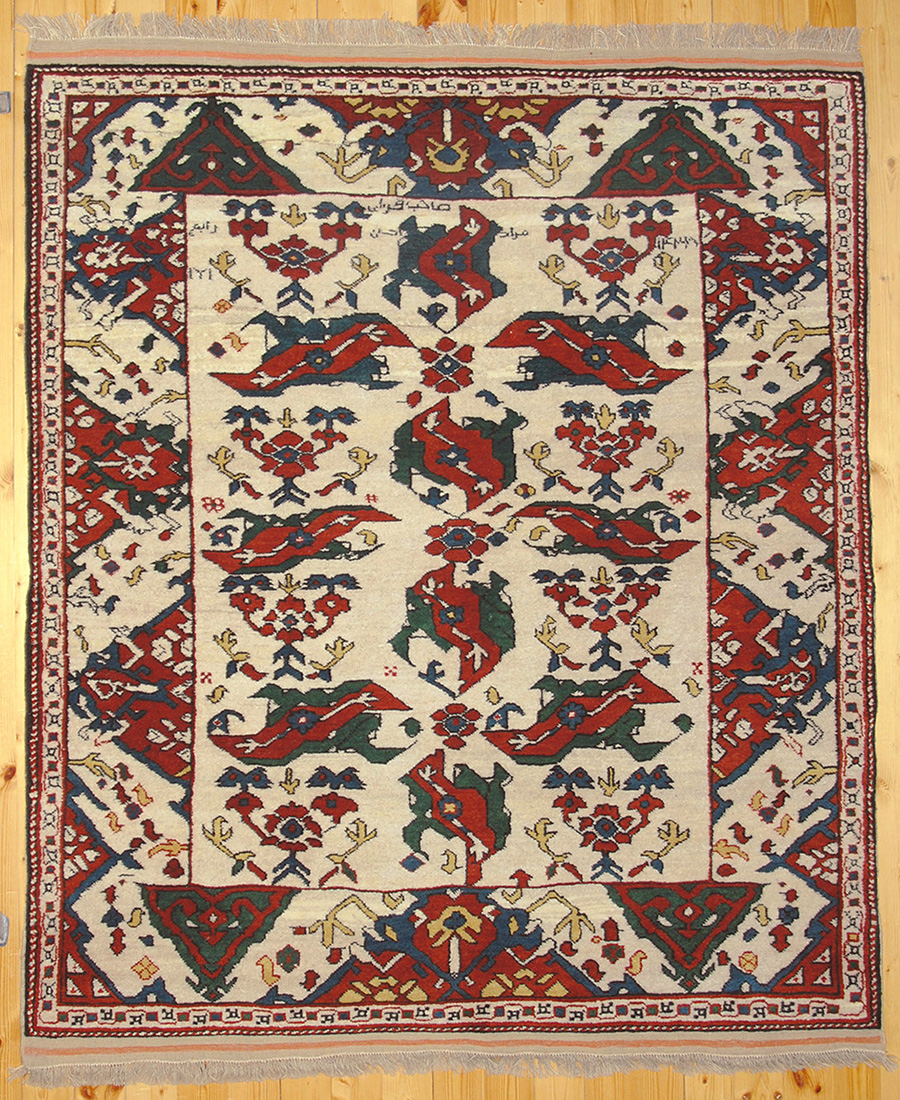
|
"Bird Ushak" rug, based on
the 17th century Western Anatolian "Bird Ushak" rug in the Philadelphia
Museum of Art Code: BUPHMA01 Size: 160x188cm (including the kilim ends) Size (ft): 5'2"x6'2" Area: 3.00 m2 Colors: red, yellow, dark aqua green, dark green, medium green, ivory, dark brown. Dyes: madder, weld (Reseda Luteola), indigo, pomegranate skins, walnut husks, onion skins (kilim ends), natural dark brown sheep wool, natural ivory sheep wool Materials: Handcarded and handspun wool for pile, ivory wool warps and ivory wool wefts (two shots). 3cm of flatwoven kilim ends at both sides. - wool on wool Knots: Gördes (Turkish, symmetrical) Pile height: 0.5cm Ends: chainged fringes Inscriptions: 1438 (=2017 weaving date), tamga (tribal seal) of Kayi tribe, "Sahib Kiran (“Master of the Auspicious Conjunction") Murad Khan Rabian" (in commemoration of the 17th Ottoman Sultan, Murad IV (1623-1640)) Weaver: Khayala Weaving Period: Three months Handwoven in Azerbaijan Design: The field, border, and outer guard stripe of this rug are ivory white. The "birds," actually stylized leaf forms, are red, centered by blue rosettes on ivory stems, and their "wings," which here assume the form of split arabesques, are blue-green. The rosettes that lie between the "birds" and in the panels beside them are small, simple, and homogeneous. They have blue centers and red petals. The wide border is subdi¬vided by thin split arabesques, which reserve prominent triangles in red, which are in turn opposed. Smaller triangles in blue-green in the end borders show no arabesques, but have a red band within their contours. The ivory ground between these triangular areas is filled with a scattering of small motifs in red, blue, blue-green, and beige. A few small elements are also strewn about the rug's field. There is no inner guard stripe. The outer guard stripe has a thin, geo¬metric vine in red which passes through tiny blue or blue-green squares and throws off at an angle little black-brown florets.
|
|
Contact us for more information about this rug
.jpg)
.jpg)
.jpg)
.jpg)

Contact us for more information about this rug

|
For more information about the above rug or to place an order please email vd@azerbaijanrugs.com (Baku, Azerbaijan) or ra@azerbaijanrugs.com (San Francisco Bay Area). We will get back to you within 24 hours or less. |